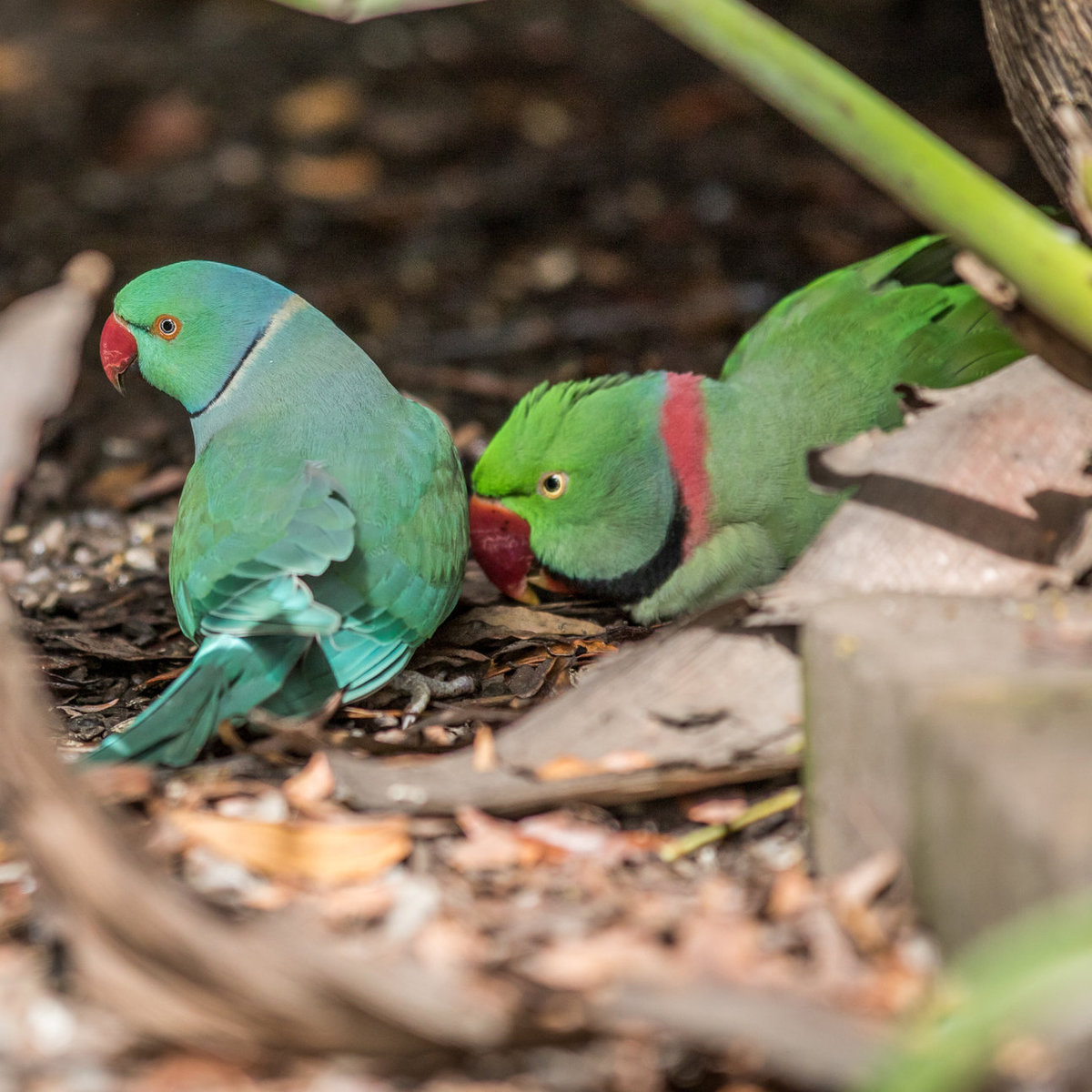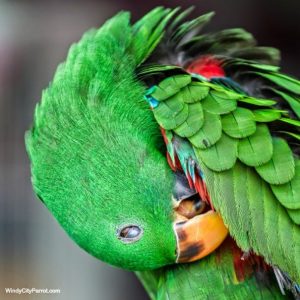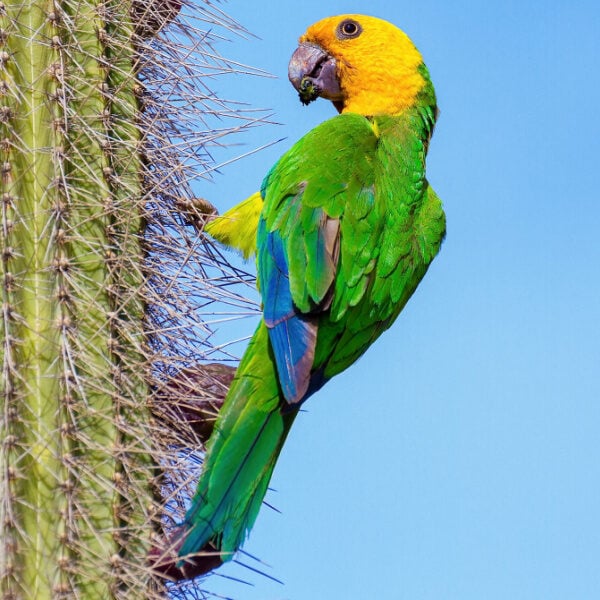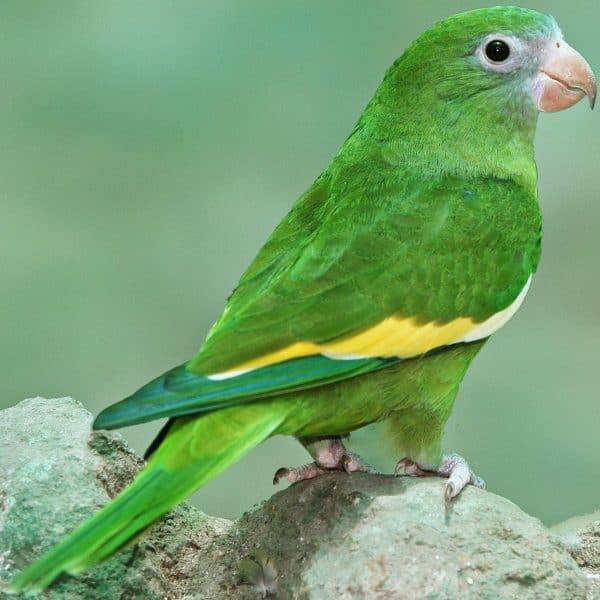Last Updated on by Mitch Rezman
Veronica F Replied
Hi, I live in the UK, just in case that makes a difference, which it probably doesn’t.
I am considering buying another pet bird but want to make the right choice for both the bird and myself.
I have had budgies, canaries and a cockatiel in the past, all indoor, cage birds.
I am looking for a bird somewhere between the size of a parrotlet to smaller than a large parrot-like an African Grey.
I have fallen in love with the look of Indian Ringneck Parakeets but have been told that they are VERY needy of attention and scream continuously if you don’t do what they want when they want, however, that is too anecdotal for me and thought I might receive more accurate information from you.
I have been researching but have only managed to confuse myself.
I absolutely adore blue coloured birds but I realise that our compatibility is more important.
I am at home most of the time.
I am not wealthy.
I do not have young children but do have visiting grandchildren, the youngest of which is 6 years and a mini-zoologist.
My son, who visits every couple of weeks, does have allergies but doesn’t live with me.
I would like to be able to train the bird to eventually come with me as I do things around the house.
I would struggle with a very screechy bird but understand that that is often caused by the owner’s behaviour and lack of understanding.
Any advice that you can give my confused head would be great. I have found those selling birds all have different advice so I really need some unbiased information.
I also have a Boxer Dog but I don’t envisage any problems.
Many thanks for your help.
Best regards,
Veronica
Hi Veronica,
Firstly, all birds are needy.
Parrotlets, notably.
Un-Socialized parrotlets become nothing more than a pair of scissors with wings.
To keep this conversation simple I would advocate for a ringneck.
It just so happens I have one sitting behind my left shoulder.
Keto is an African ringneck which makes him slightly smaller than an Indian ringneck.
Putting things in perspective, his body weight is about the size of a fat cockatiel just over 100 g.
His tail is 5 or 6 inches longer than a cockatiel’s and so you’ll want a bigger cage so he or she is not banging their beautiful rear appendage against the bars of the birdcage.
Conures are screechy, noisy birds.
Big cockatoos are screechy, noisy birds.
Ringnecks are fun and have the sweetest of voices, I can listen to them all day which by the way I do.
Keto resides with us in the upper part of the new Windy City Parrot and in the morning travels down with mom where he sits on a counter in his day cage and excitedly greets customers providing a full range of entertainment.
We rescued Keto.
From what we can figure out he’s between 16 and 18 years old.
He’s a brilliant sweet little bird but if you come within 1 inch of his beak he will bite – hard.
We have learned to overcome that by using toys and distractions.
[videopress ADaq4X03]
So we can control his movements from cage to cage to cage so that has not proven to be a problem.
He likes to eat walnuts, corn and some grapes as well as the seeds in his Higgins Safflower Gold mix and Goldenfeast Conure blend.
When he’s upstairs with us his cage door is open and he flies freely between his selected landing zones although we have others strategically placed throughout the 40-foot long living space.
Ringnecks are not powder birds.
African Greys, Cockatoos and Budgies are powder birds.
As long as you’re keeping the bottom of the birdcage clean with newspaper there shouldn’t be any allergic triggers to worry about.
So yes stick with your gut and look for a ringneck.
They do actually come in the flavor of blue.
Best of luck
MitchR
Why I Drove 800 Miles To Rescue An African Ringneck
Sharon says “I have 2 Indian Ringneck parakeets.”
Maverick is a 3 yr. old talking male.
Sunnie is a 2 1/2 yr. old female.
She doesn’t talk but chirps/squawks to share her emotions.
Both are flighted and have their own cages for nighttime sleep.
They’re happy and together all day- playing, eating, and sharing/fighting with toys; we buy 2 of every toy.
They love us too.
We’re worried about Sunnie.
She has been biting her feathers and breaking them.
We’ve taken her to our vet and he has pulled out her broken wing feathers twice.
He gave us “Pluck No More” which we’ve been using and following the directions exactly.
We were also told to totally change her cage environment- the placement of perches, toys, food/water bowls-everything.
At first, she timidly explored her new environment but likes it and even “invites” Maverick in to play/eat/etc.
She’s getting better but still plucks infrequently.
My big unanswered question is WHY does she pluck?
And how can we help her to stop?
Please help us. Sharon
Hi Sharon,
When I first met Catherine she had a pair of Indian ringnecks.
Yes, male ringnecks are the talkers and females are the whistlers.
17 years later we now have a rescued African ringneck Keto and he is just a little chatterbox.
Unfortunately, he only knows 10 or 12 words which he repeats 27 times a day but we find it charming.
I find unsettling is that a vet offered an over-the-counter remedy that supposedly should work on hundreds of species of birds.
That is an “I have no idea what to do” gesture.
I also find it suspect that Sunnie is biting her wing feathers.
So I ask two questions rhetorically.
In that, there are no nerves in feathers but feathers stimulate nerves around where the feathers attach.
Could she have a fractured or sore wing?
I would have one of you restrain her with a towel and slightly feel the area around her marginal wing coverts to see if she flinches when you get to a particular spot.
This video covers our rotary trimmer and how to towel a bird.
If that happens it’s time for an x-ray.
Some bird species will pluck feathers from their own body to use in nest building.
This would be a sign of hormonal activity.
An easy fix is to apply light therapy by installing a bright light of any sort no more than 6 inches over her cage.
Set the light on a timer for 12 hours on and 12 hours off ensuring that she is in the cage when the light comes on and when the light goes out indicating the start and the end of the day.
This helps in synchronizing her circadian rhythms because North American light cycles just confuse the heck out of birds because it is not what they are instinctually expecting.
Give it 2 to 3 weeks and if that doesn’t work, lock her in the cage for a week 168 hours.
Keep the light on the whole time.
Place a cover around the cage as usual in the evening for the night but leave the light on.
This is not inhumane and is recommended by veterinarians like Gregory Harrison the founder of Harrison’s bird food.
This will totally reset her circadian rhythm hopefully eliminating any hormonal urges she may be feeling.
Let me know how that goes in the meantime if you can shoot me a picture from a couple of angles of how her cage is set up that would be most helpful.
Best
MitchR
Eli Asks
Hi, I own a Ringneck male and love him to death, but lately, he has been acting like he wants to nest and is biting quite a bit.
He is ripping paper and making little nests all around the house and when I go to put him back in/on the cage, he tries to bite.
Would the spectrum lighting help?
Or put a mirror in the cage?
All suggestions are welcome!
Betsy in Washington State
Hi Betsy
If your Ringneck is sporting a ring around its neck it is a male for sure. And yes, males can also become hormonal due to poor lighting and incorrect physical affection from humans.
Installing a full spectrum bulb 6″ above the top of the cage (just out of reach) and set on a timer 12 hours on and 12 hours off will make a big difference.
Time to set it, figure 7:30 am to 7:30 pm at this time of the year. When DST comes around just leave it and it becomes 8:30 to 8:30.
Here is our lighting category. LIGHTING
We have a customer who comes into our store and she also had the same story about her Quaker male that you have told.
With the simple lighting fix after a month came in to let me know that her special boy bird was now again a sweet boy.
If your bird is a loner, has no interest in human company, then yes, get him a mirror.
Regarding improper physical affection.
If you are petting your bird below the neck.
Stop it.
It only encourages hormonal behavior.
You and your bird can enjoy a lot of love by only petting from the neck up.
Please let us know how it works out.
Can I keep multiple Indian ring neck parrots together in the same cage? from Quora
Mitch Rezman Answered just now
It’s entirely possible but it’s an endpoint, not a starting point.
At the beginning, every bird should have its own cage because we don’t know how birds are going to react to other birds or humans – bird behavior is not predictable without training.
The size of the aviary (bird cages are not suited for “multiple” birds) is especially important with a small flock.
We have 10 budgies in an aviary measuring 37″ L x 22 1/8″ D x 60″ H
The size of this cage allows us to offer three feeding stations and water stations.
Much like humans birds can be antagonistic to other birds.
Jealousies arise.
Alpha male aggression is not a fallacy.
My first concern about eventually moving multiple birds into a single cage is about being able to provide areas that offer some sense of privacy just like you or me wanting to go into the bedroom and close the door for a little bit.
You want to spend 3 to 6 months observing the birds outside of their individual cages.
There’s really no other way that I know of to help predict their activity.
Our Senegal parrot was highly jealous and very aggressive towards a recently rescued African ringneck.
They could only be let out of the cage individually never the same time because the Senegal would always try to attack the ringneck.
My point is you don’t want to put all the birds in a single cage go to sleep in wake up in the morning to bloody toes.
Take your time, be observant and let nature take its course.
Best of luck
MitchR
Author Profile
Latest entries
 The Traveling BirdJune 26, 2025Can You Name 5 Parrot Species That Are Living Wild in the USA?
The Traveling BirdJune 26, 2025Can You Name 5 Parrot Species That Are Living Wild in the USA? Bird BehaviorJune 26, 2025How is it Parrots Are Problem Solvers Social Animals and Even Use Tools?
Bird BehaviorJune 26, 2025How is it Parrots Are Problem Solvers Social Animals and Even Use Tools? Bird & Parrot AnatomyJune 25, 2025How a Tiny Chemical Modification Makes Parrots Nature’s Living Paintings
Bird & Parrot AnatomyJune 25, 2025How a Tiny Chemical Modification Makes Parrots Nature’s Living Paintings PigeonsJune 20, 2025How Do Parrots Thrive in Cities Outside Their Native Habitats?
PigeonsJune 20, 2025How Do Parrots Thrive in Cities Outside Their Native Habitats?




